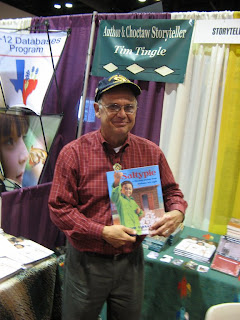The books I featured are:
The People Shall Continue, by Simon Ortiz. I chose that because that book embodies our perseverance (by our, I mean indigenous people) in the face of a 400+ year history of warfare. It is a perseverance that includes all peoples who stand together in the face of adversity and persecution.
Jingle Dancer, by Cynthia Leitich Smith. This is second in my line-up because in the text and illustrations, readers can see the joy and vibrancy of our present-day lives---a joy and vibrancy I feel when I'm home at Nambe, dancing or helping my daughter or my nieces and nephews get ready to dance.
Last is Birchbark House, by Louise Erdrich. In this, the first of several books about Omakayas, a young Ojibwe girl, readers gain a Native perspective on the effects of Europeans moving on to homelands of Native peoples. Unlike the way that Laura Ingalls Wilder portrayed 'other' to her characters, Erdrich doesn't dehumanize other to the characters in Birchbark House.
The soundtrack I used was one of a small set of options. The music has that excitement I feel when I'm reading and writing about books that I cherish. I'm happy to know its getting a lot of traffic, and I hope it is helping people find my site, and increasing their ability to look critically when selecting children's books.



